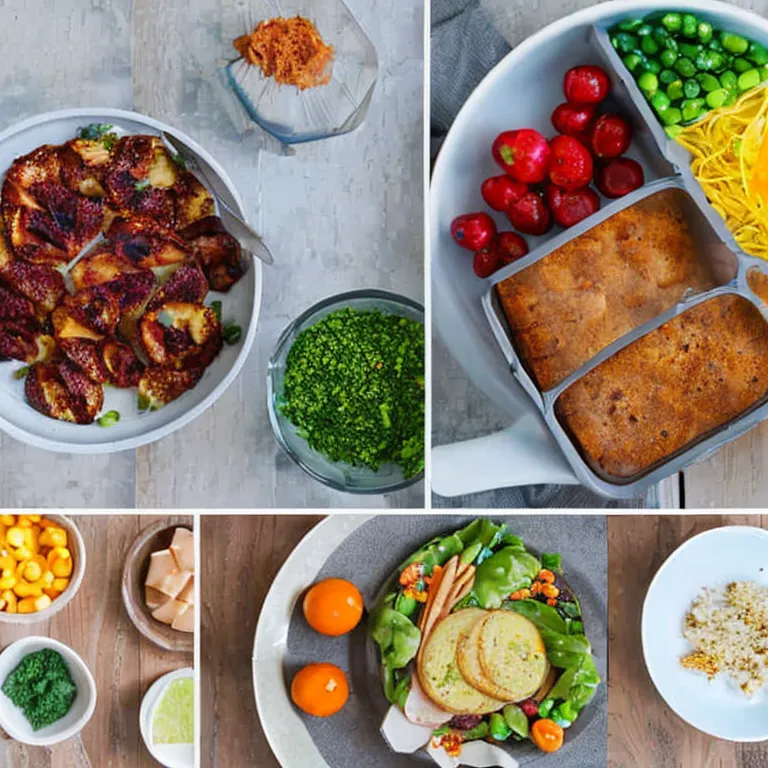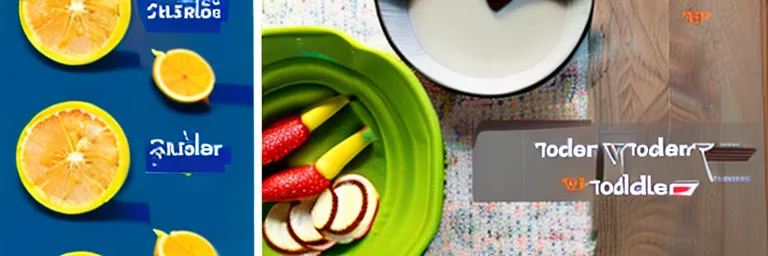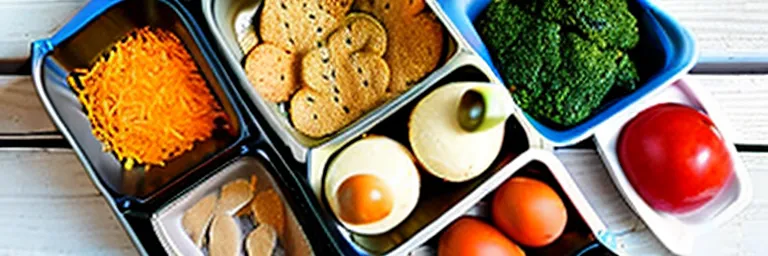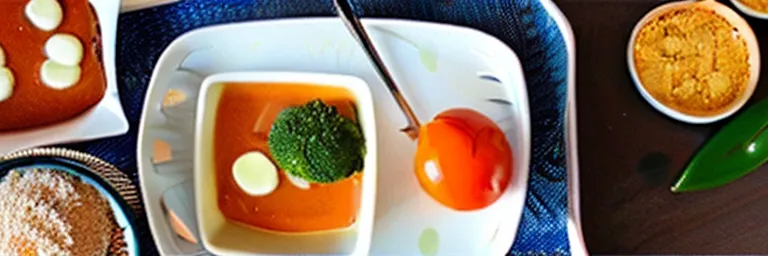How to Set Up Structured Eating Times for Toddlers

Learn how to setup your toddler’s eating times in this helpful blog post from Toddler Recipes Australia! Get all the best advice on when and how to feed your toddler, as well as some tips for making sure their nutrition needs are met. Discover how to create a structured eating schedule that will keep your toddler happy, healthy and well-fed. With the right structured eating advice, you can ensure your little one’s dietary needs are met while still having time for other important activities.
Setting Up Structured Eating Times for Toddlers
As the parent of a toddler, you know that mealtime can be quite the challenge! You want your child to have structure and order when it comes to mealtime. But how exactly can you set up structured eating times for your toddler?
Fortunately, having a consistent schedule can be easier than you think. Here are a few tips and tricks to help you start establishing structured eating times for your toddler.
Creating a Meal Plan
Creating a meal plan is a great way to ensure that your child is eating a balanced and nutritious diet. You can do this by looking for some easy-to-make toddler recipes and setting aside some time for grocery shopping. Then, make sure you plan out your meals for the week, taking into account any special occasions or dietary restrictions that your toddler may have. Additionally, you could make a master grocery list that details all the food items you need for the week’s recipes.
Setting Clear Meal Times
Once you have a meal plan ready, you should set a clear schedule for meal times. This can help ensure that your toddler is eating at the same times each day. Additionally, you should stick to regular snacks as well, such as after nap time, before bed, and after outdoor play.
Create a Routine
When it comes to setting up structured eating times, it’s important to create a routine. For example, before an actual meal, you could do activities like setting the table and washing hands. Additionally, you can teach your child table manners and expectations before they dive into their meal. Finally, remember to be consistent with mealtime routines and rules. Over time, your toddler will begin to recognize and follow them.
Offer Healthy Options
Lastly, make sure you offer your toddler a variety of healthy food options. Many toddlers will eat the same foods over and over again, so it’s important to get creative and offer different types of cuisine. With Toddler Recipes Australia, you’ll find easy to make and healthy recipes for your toddler that won’t take up too much of your time. To make things even easier, you can easily download and print out the recipes right from the website!
Setting up structured eating times for your toddler doesn’t have to be difficult. With the right planning, you can provide your child with a balanced and nutritious diet while teaching them important lessons about mealtime. Thanks to Toddler Recipes Australia, you’ll have no shortage of tasty and creative recipes to choose from.


1. Introduction: What is Structured Eating Times for Toddlers?
Parents of toddlers understand the importance of a healthy diet and good eating habits, but it can often be hard to figure out when to feed them and how to develop nutritious mealtime routines. Knowing when and what to feed your toddler can be a challenge, but by establishing a regular schedule of structured eating times, you can be sure that your toddler is given the nutrition they need in a consistent and enjoyable way.
Structured eating times for toddlers involve an organized meal plan and snack plan that can be tailored to their individual needs. It’s a simple solution for parents looking for an easy way to provide their child with healthy meals without the fuss and worry of ensuring that their little one is getting enough food throughout the day. With structured eating times, parents will find that their toddlers become accustomed to their meal plan and adjust to the schedule more easily.

2. Benefits of Establishing Structured Eating Times for Toddlers
Establishing structured eating times for toddlers isn’t just a great way to ensure they are getting proper nutrition, but it can also have a number of other benefits too. Here are some of the benefits of having a well-structured eating plan for your toddler:
-
Helps to Develop Healthy Eating Habits: Establishing structured eating times for toddlers can help to instill healthy eating habits. It can help them develop an understanding of when it’s time to eat, how much to eat, and how to regulate their hunger.
-
Builds a Routine: Having a structured eating plan for your toddler can help to create a routine. This can help to provide consistency and stability for the child, both of which are indicative of healthy relationships with food.
-
Reduces Mealtime Battles: Struggling with mealtime battles can be one of the most challenging parts of having a toddler. With a well-structured eating plan in place, there can be less arguing and negotiation as your toddler knows that food is provided at a certain time each day.
-
Makes It Easier to Monitor Eating Habits: Having a structured eating plan in place makes it much easier to monitor your toddler’s eating habits. As such, you can be sure that they’re getting all the nutrients they need and that their energy levels stay in balance throughout the day.
With these benefits in mind, it’s easy to see why establishing structured eating times for toddlers can be so beneficial. By having a well-structured eating plan in place, you can help ensure that your toddler has a healthy relationship with food and that their nutrition needs are met.
Stay tuned for the next section, where I’ll explore how to actually set up structured eating times for toddlers.

3. Simple Recipes for Toddlers
Here at Toddler Recipes Australia, I’m always looking for simple yet delicious recipes that can be easily cooked for fussy little eaters. Here’s a few of my favourites:
Marmite Egg Curry
Ingredients:
- 4 eggs
- 1 onion, diced
- 1 tablespoon of Marmite
- 2 tomatoes, diced
- 1 teaspoon of paprika
- ¼ teaspoon cumin
- 2 tablespoons of oil
Instructions:
- Heat oil in a pan over medium heat.
- Add diced onion and fry until lightly browned.
- Add diced tomatoes and all the spices. Stir to combine.
- Add Marmite and cook for two minutes.
- Crack the eggs into the pan and stir, cooking until the eggs are done.
- Serve with steamed rice or chapatti.
Yoghurt Fishcakes
Ingredients:
- 200g white fish fillet
- 2 tablespoons of plain yoghurt
- 2 tablespoons of grated cheese
- 1 cup of breadcrumbs
- 1 egg, beaten
Instructions:
- Preheat the oven to 200 degrees Celsius.
- Place the fish fillet on a baking sheet and bake for 15 minutes.
- When the fish is cooked, mash it into a bowl and add the yoghurt, grated cheese, breadcrumbs and beaten egg.
- Mix everything together until it forms a firm mixture.
- Shape into small cakes and coat with extra breadcrumbs.
- Bake the cakes for 10 minutes, or until golden brown.
- Serve with a side of steamed vegetables.
These recipes are sure to please even the pickiest of eaters. Now that you’ve got some ideas, it’s time to get cooking and enjoy some delicious, nutritious family meals!

4. Tips for Making Family Meals More Enjoyable
- Keep mealtimes upbeat: A relaxed and joyful atmosphere at the dinner table can often encourage your child to stay longer, eat more, and even try new foods.
- Include your child: Allow your child to handpick some of the ingredients or help to prepare the meal under your supervision.
- Display attractive & colourful plates and cutlery: Place attractive plates, colourful cutlery, and interesting decorations on the table to get your child’s attention and draw them to the meal.
- Serve family-style meals: Fetch all the ingredients to the table so that your child can scoop and select items of food with his own hands.
- Make meal sharing fun: Set up a game such as “forage for food” or practice mnemonics to illustrate the value of trying new foods and how enjoyable food can be.
- Allow enough time: Don’t rush mealtimes by limiting children’s necessary mealtimes. Take your time to enjoy a conversation and build an enjoyable experience.
- Set acceptable behaviour: Remind your child of the rules you have established such as respect, co-operation and conversation while eating.
- Enjoy the process: Enjoy mealtime as an opportunity to bond and learn. It is important to give your toddler positive feedback on their efforts and concentrate on the positives instead of the negatives.



7. Establishing a Routine Around Meal Time
Establishing a structured eating routine for toddlers can be daunting. But having a routine will make meal time easier.
Here are some helpful tips for establishing structured eating times for your toddler:
-
Make mealtimes predictable. Plan set times for breakfast, lunch and dinner, and offer snacks in-between if needed. It’s also important to keep meal times consistent from day to day so your little one knows when it’s time to eat.
-
Schedule meals and snacks in the same place, with the same people. This will help your toddler learn when it’s time to eat and will also help them to associate the same environment with meals.
-
Start each meal with the same routine: take off shoes, wash hands, and say a quick blessing or prayer. This will help get your child in the right mindset for eating and can be a great time to teach healthy behavior.
-
Involve your toddler in pre-meal activities such as setting the table and washing hands. This will teach your little one simple tasks that they can do to contribute to the mealtime routine, and will also help develop a sense of accomplishment.
-
Put away all distractions like toy, computer, and phones and make sure everyone is seated for meals if possible. This will help your toddler focus on eating and appreciate the food.
Following a regular eating schedule can help your toddler establish healthy eating habits and help make mealtime easier. Plus, it will make it much easier to plan and prepare meals ahead of time.
Happy cooking!


9. How to Structure Meal Planning
Ideally, a structured eating schedule for toddlers should include three meals and two snacks per day. Structure meal planning according to the chart below, making generous use of leftovers when possible.
| Meal Options | Time of Day |
|---|---|
| Breakfast | 7:00am |
| Snack | 10:00am |
| Lunch | 12:00pm |
| Snack | 3:00pm |
| Dinner | 6:00pm |
When planning meals, consider the following suggestions:
- Choose nutritious options that are suited to a toddler’s developing taste buds.
- Stock up on meal items in advance, making sure to shop for the week’s meals ahead of time.
- Utilize leftovers to create several days’ worth of meals in one go.
- Whenever possible, make food prep a family activity. Involving toddlers in cooking their own meals encourages early healthy eating habits.
- Have fun! Planning and enjoying meals as a family is an enjoyable experience.

10. Conclusion: Making Eating Easier and More Fun for Toddlers
Eating with toddlers doesn’t have to be hard work and it can even be enjoyable for everyone if you know the right structure to provide for them. The key is to create healthy and stimulating meal times for them by ensuring the environment is balanced and organized yet also fun and interesting. Planning meals ahead of time and having meals on a regular schedule so toddlers know what to expect are both important in creating a well structured eating plan. With the help of Toddler Recipes Australia, you’ll have plenty of ideas to create healthy and nutritious dishes that both you and your toddler can enjoy together.

 Never miss a recipe from us, subscribe to our newsletter
Never miss a recipe from us, subscribe to our newsletter